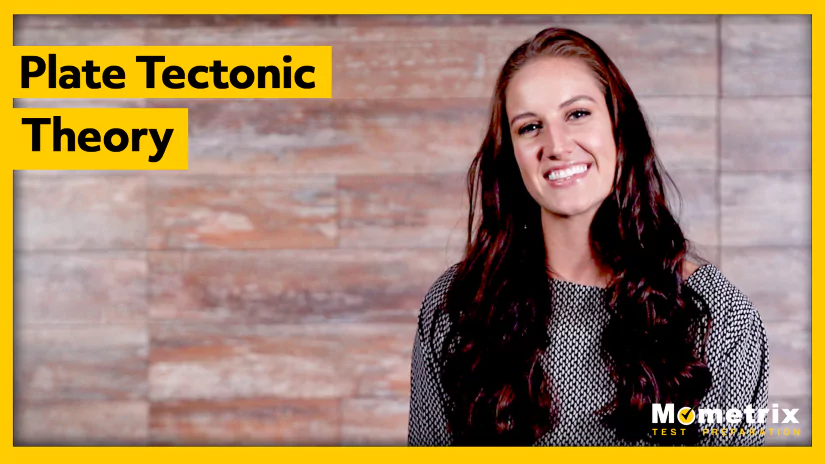
Hey everyone! Today we’re talking about plate tectonics.
Layers of the Earth
Have you ever wondered what the earth is made of? It’s just dirt and rocks and stuff, right? Well, yes, but there are many more different layers below us. The layer we’re standing on is the crust, which is the outermost layer of the “Lithosphere,” and varies from 0 to 62 miles deep, or thick.
There are various levels and mantles below, some of which are liquid. At the very center you have the earth’s inner core which is solid rock. At least, this is what scientists think—the deepest hole we’ve dug is only 7.5 miles deep into a planet that has a diameter of 7,900 miles.
Tectonic Plates
But back to the top. Tectonic plates are part of the upper crust, the lithosphere. They’re a bit like a 3D jigsaw puzzle, except they’re all different shapes and sizes and don’t necessarily fit well together. In fact, they’re constantly rubbing each other. But they don’t move much, only up to 10 centimeters annually. That’s about 4 inches for you Americans.
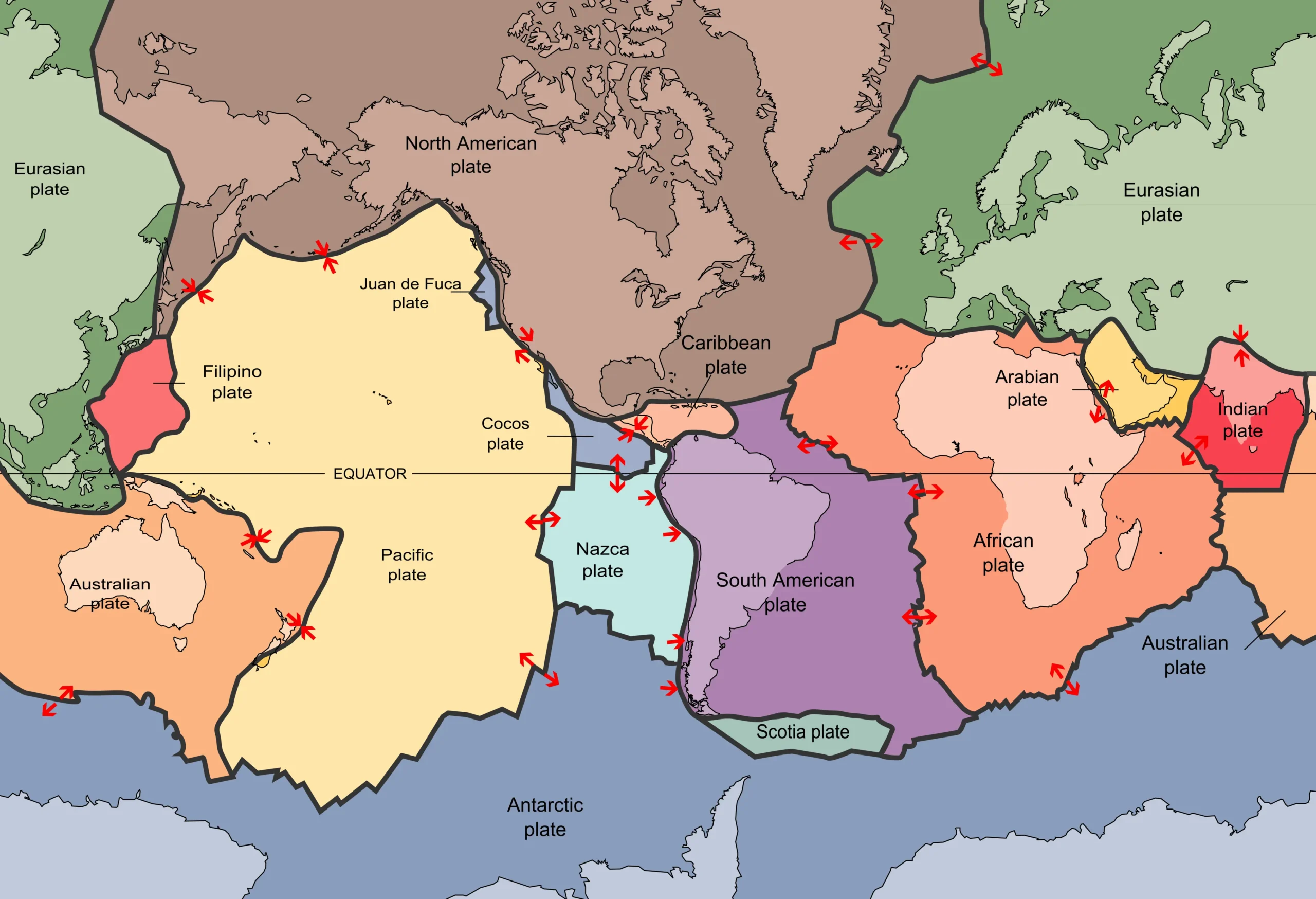
Why Do Tectonic Plates Move?
The presumed reason the plates move is because they are more dense and stronger than the asthenosphere that is located directly below the lithosphere. In fact, these plates float on top of the asthenosphere, which is a highly viscous almost solid layer. Friction and gravity play a role, as do the currents and heat of the deeper regions on the Earth.
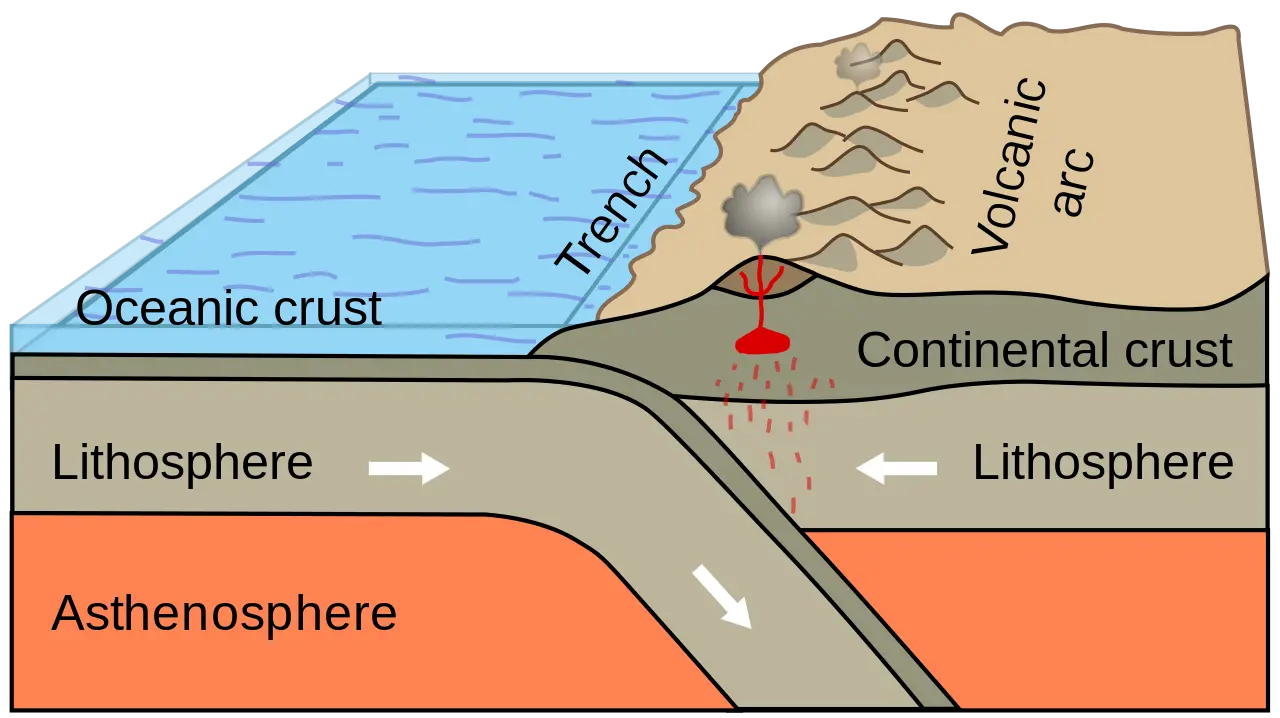
There’s a lot more to this, and we don’t fully understand everything, but that’s about all you need to know for now.
Convergent, Divergent, and Transform
The way these plates move defines how these plates interact when they meet.
There are three types of boundaries: convergent, divergent, or transform.
Most of the exciting earth stuff happens at these boundaries, such as earthquakes, mountain and trench formations, and volcanoes.
Convergent Boundaries
A convergent boundary is destructive, where two plates move toward one another. There are three locations for these boundaries: oceanic-oceanic, oceanic-continental, and continental-continental. When plates meet under an ocean, or an oceanic-continental boundary meet, the thicker and more dense plate (usually the oceanic one) is forced below the less dense plate in a process called subduction.
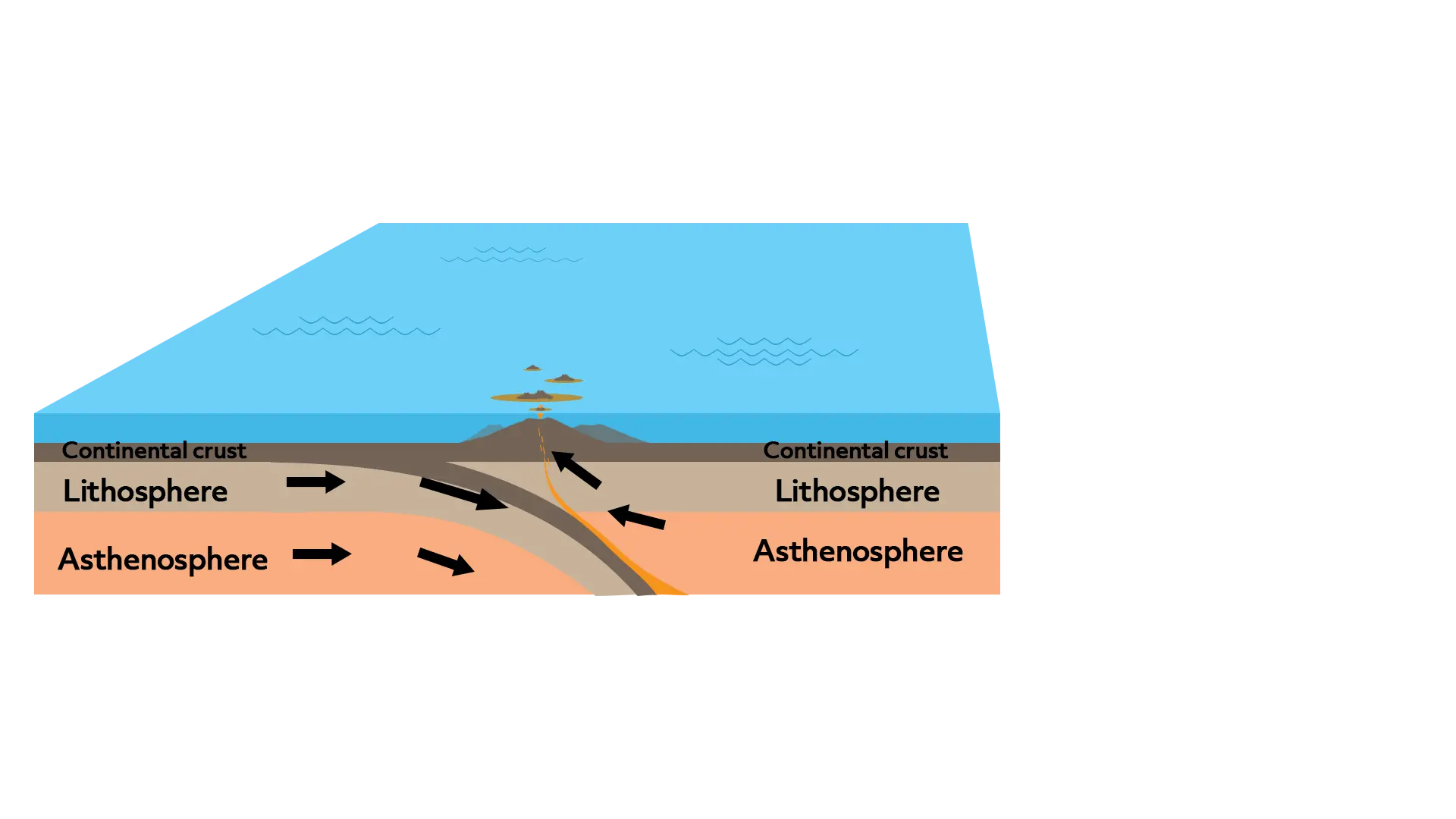
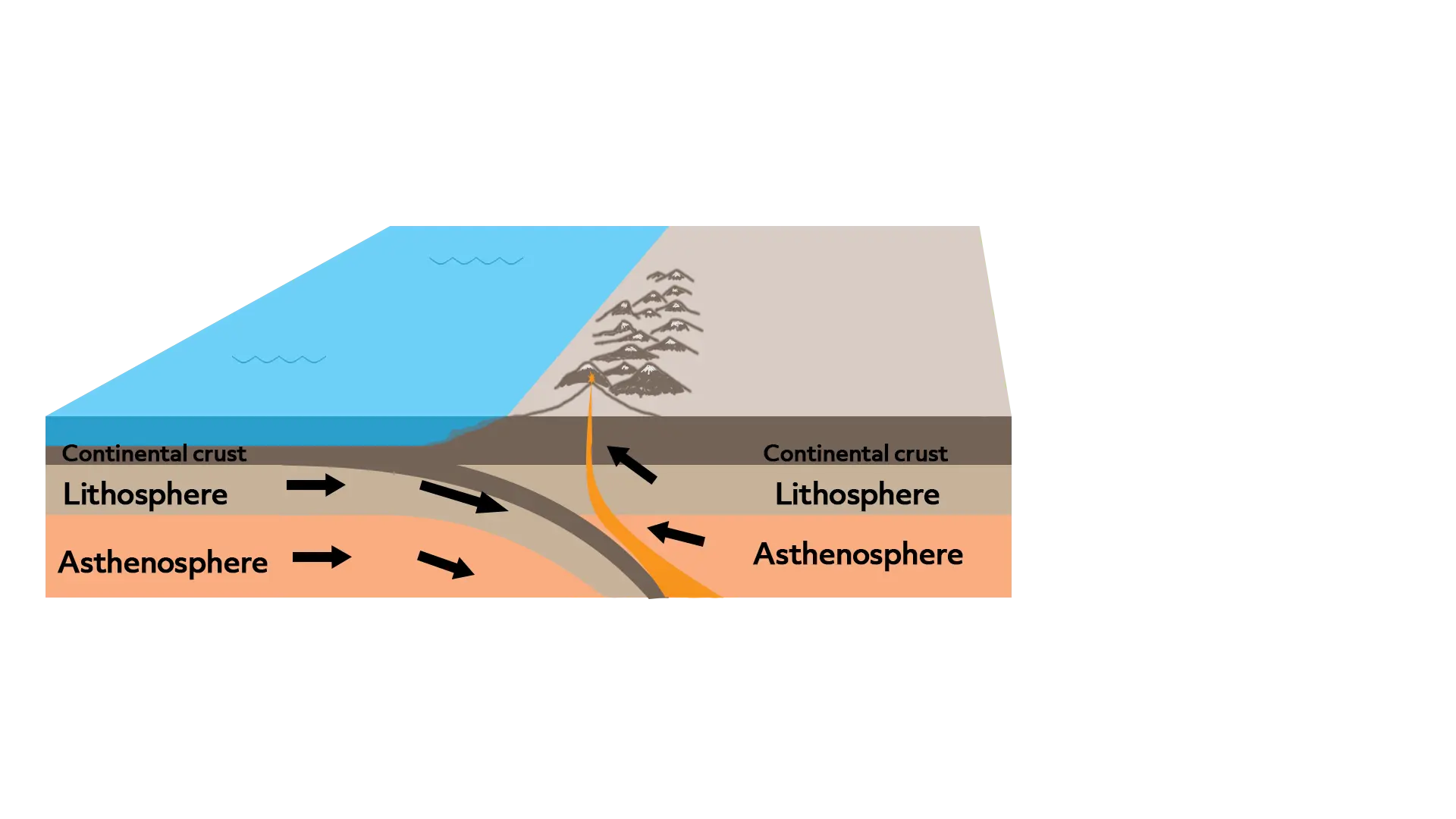
As that plate is forced into the earth, it heats up, which pushes magma towards the surface of the earth. If that magma doesn’t cool before it reaches the surface, it explodes as a volcano.
When two continental plates converge (where no ocean is involved), neither one of them is dense enough to slip into the asthenosphere, so they have to go up, which creates mountains like the Himalayas and Appalachians.
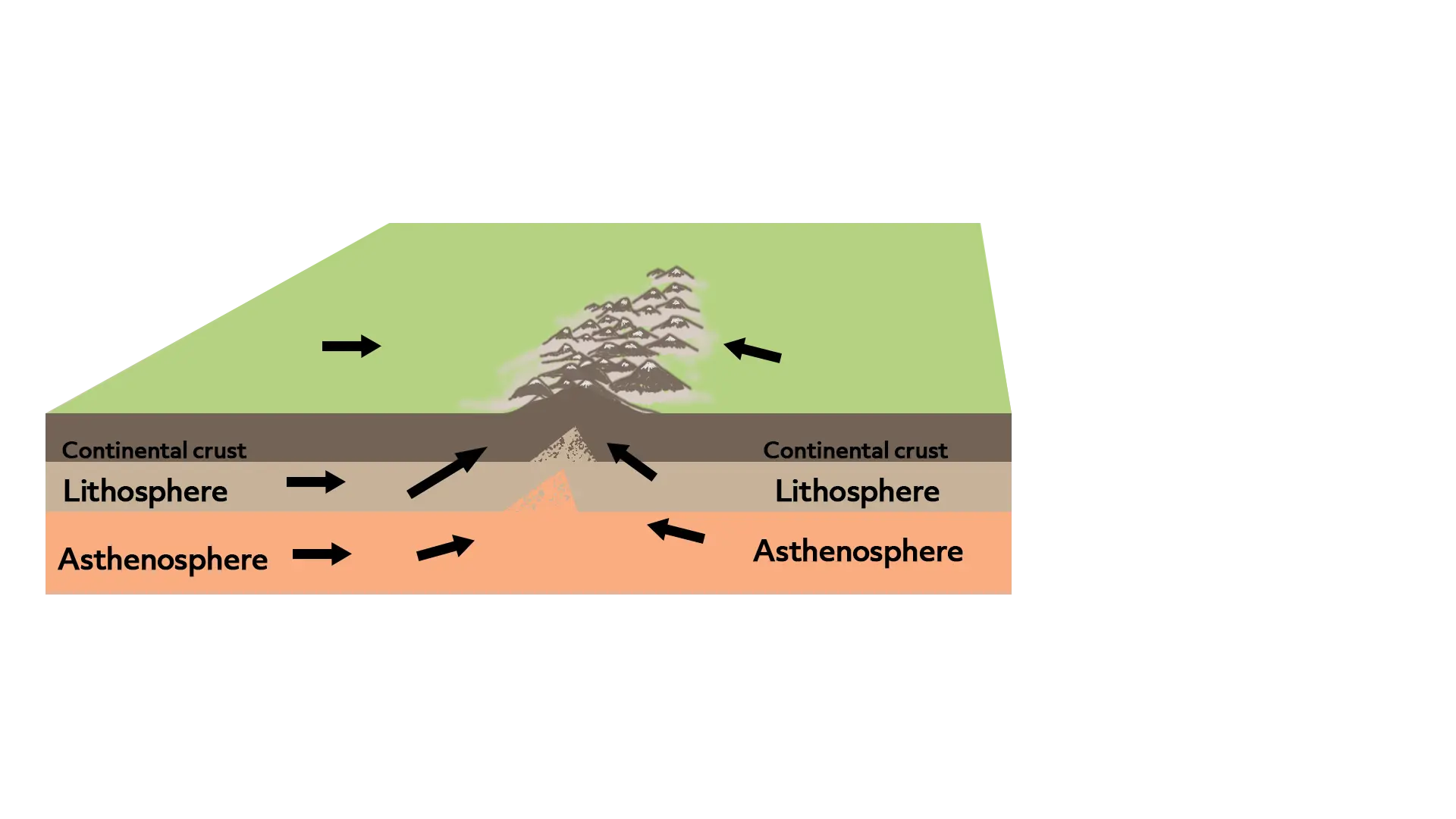
Divergent Boundaries
Now onto divergent boundaries. These are where plates, well, diverge from each other, meaning they move away from each other. As you can probably imagine, this creates rifts which eventually are filled with rising magma. These mainly happen on the ocean floor.
Transform Boundaries
A transform boundary is where two plates slide next to each other. They can help relieve strain. The famous San Andreas fault in California is a transform fault, which means that even though these types of boundaries aren’t destructive, they can still cause earthquakes.
Now what about the Hawaiian islands? That must be where the pacific plate and some other plate meet, right?
Well, no. Hawaii is pretty much dead center in the pacific plate. The nearest plate edge is 2,000 miles away.
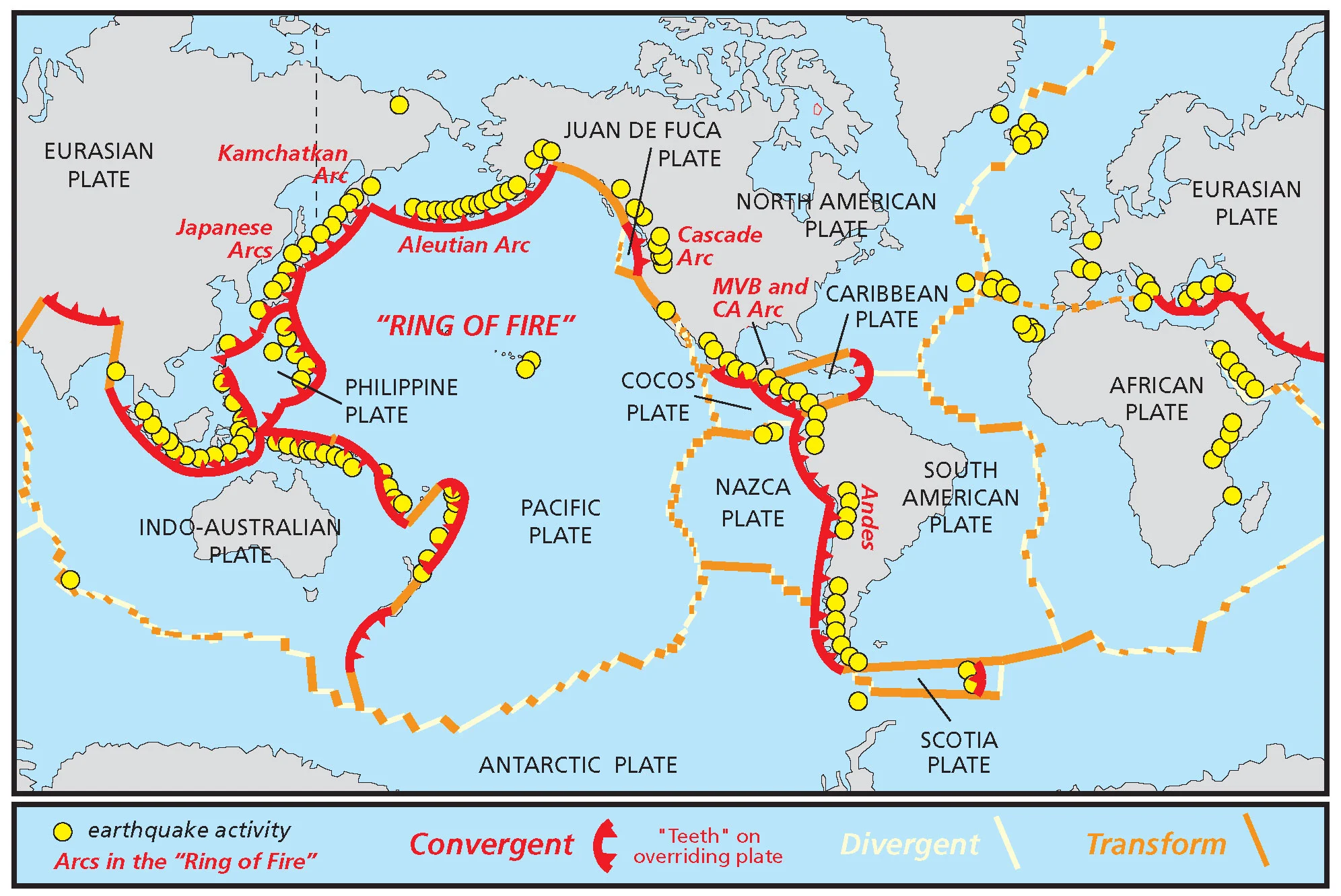
According to the Geological Society, some geologists have suggested that a ‘hot spot’ in the mantle, which remains stationary as the Pacific Plate moves over it, explains the existence of the island chain. The hot spot may represent the top of a mantle plume which originated deep down at the outer core-lower mantle boundary.
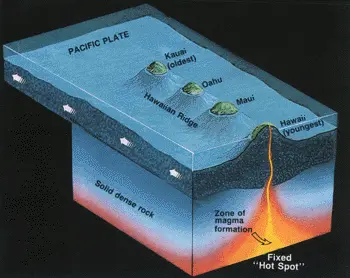
The plate moves in a northwesterly direction due to the sea floor spreading along the East Pacific Rise. As oceanic lithosphere moves away from the hot spot, volcanic activity ceases, and it cools, becomes denser, and slowly subsides. As new oceanic lithosphere is positioned over the hot spot, a new island will begin to form above.
Well, that’s all for now. See you next time!
